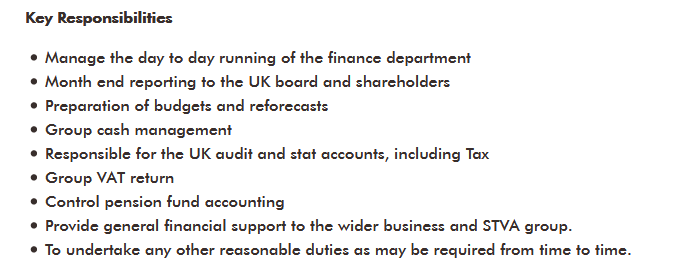
Bored. Undervalued. Frustrated. Unfulfilled.
These are just a few of the horrible words that spring to mind when you’re trying to climb the career ladder but the CIMA jobs you’ve taken so far have held you back.
Perhaps you’ve really enjoyed certain topics in your CIMA studies such as…ratio analysis….investment appraisal…competitor analysis…but you haven’t been able to use this acquired knowledge in real life.
Or maybe you want to develop your IT and communication skills by getting better at using MS Excel and having confidence in presenting to senior management.
Either way, you want to be able to grow as a person and advance your career.
But you’re just not getting the opportunity.
Because your superiors act more like sergeant majors than mentors. Giving you orders rather than listening to your opinions. Demanding adherence rather than encouraging initiative.
Sound like a fairly accurate description of your current role?
It’s not uncommon.
No one has ever taken a job and had it turn out exactly as they’d hoped.
But what you can do is narrow the odds in your favour so that your next career move is the right one for you.
How do you do this?
Let’s find out…
Step #1: Analyse the Job Description
Unless the work you do on a daily basis is satisfying, it won’t matter how much you get paid or how much potential there is for future advancement.
So when you come across a job advertised on a recruitment website like Robert Half – or use Linkedin to your advantage – you really need to go through the job description line by line to see whether it appeals to you or not.
Here’s an example of a vacancy for a Finance Manager role:

Ask yourself:
- Would you enjoy performing theses duties on a regular basis?
- Do the tasks build upon your CIMA studies?
- Are there any skills you look forward to using or developing?
- Is there enough variety, autonomy, challenge?
Step #2: Research the Company Culture
As you’ll spend most of your day at work, it’s important that you feel comfortable in the working environment. Whether that’s getting along with the team in your department, having a boss you can discuss things with, or having a working style that suits your personality.
Now, if the role is with another organisation to the one you currently work for, you’ll need to discuss a few things with the recruiter who is dealing with the hiring company (or the employer themselves if dealing with them directly).
Questions to ask them are:
- How are people incentivised?
- What is the age and make-up of the team you would be working with?
- Do different departments interact with each other?
- What is the style of management like?
- Is it a fast paced working environment?
- How are conflicts resolved?
- What is their attitude to flexible working?
- How do people dress?
- What sort of recognition is given for doing a great job?
Based on the answers to these questions, does it feel like a good team and organisation to work for?
Step #3: Uncover the Role History
Chances are, the job you are looking at has been performed by other people. By finding out who has been successful in the role, and what their characteristics were, it will help you determine whether this would be a good fit for you in terms of career growth.
Questions to ask here are:
- Who has been successful in the role? (their qualifications, previous experience etc)
- How have they been able to perform the role so effectively?
- What skills have they been able to develop beyond the job description?
You may even be able to ask the person in the role currently by doing a search on Linkedin and connecting with them. This will help you learn what the job and organisation are like from the inside.
Step #4: Find Out About Available Support
If the role – and department you would be working in – doesn’t have enough support from the organisation as a whole, it will be very difficult to work effectively, improve and grow.
Questions to ask at this stage are:
- What IT systems are used and are they adequate for the tasks involved?
- Will you have support from other departments with regards to information flow?
- Does your department have enough staff to cope with the workload?
- How much study support, training and development will be available to you?
Step #5: Determine Your Future Career Prospects
This final step is all about looking at the big picture before you make the leap into a new position. Because you want to be able to see a path for advancement and growth, otherwise you will soon be back to where you are now.
Sometimes you will get an indication of this in the job advert. Let’s have a look at an example of this below:

As you can see, this position offers opportunities to work with other divisions and progression to senior management roles. So they don’t expect you to stay in your comfort zone and be happy to tread water in your career.
You can also find out more information about potential career growth by asking:
- Where have people in this role typically moved?
- What is the average duration in the position?
- What will you need to do in order to be fast tracked?
Conclusion
Choosing the right CIMA jobs for your career growth needn’t be as difficult as it sounds.
It’s just a matter of doing your homework first before you decide to make the leap.
The 5 steps above will help you do just that. They’ll provide you with as much information about the jobs you are considering as you can realistically gather. And armed with this knowledge, you can then determine which is the best fit for you.
